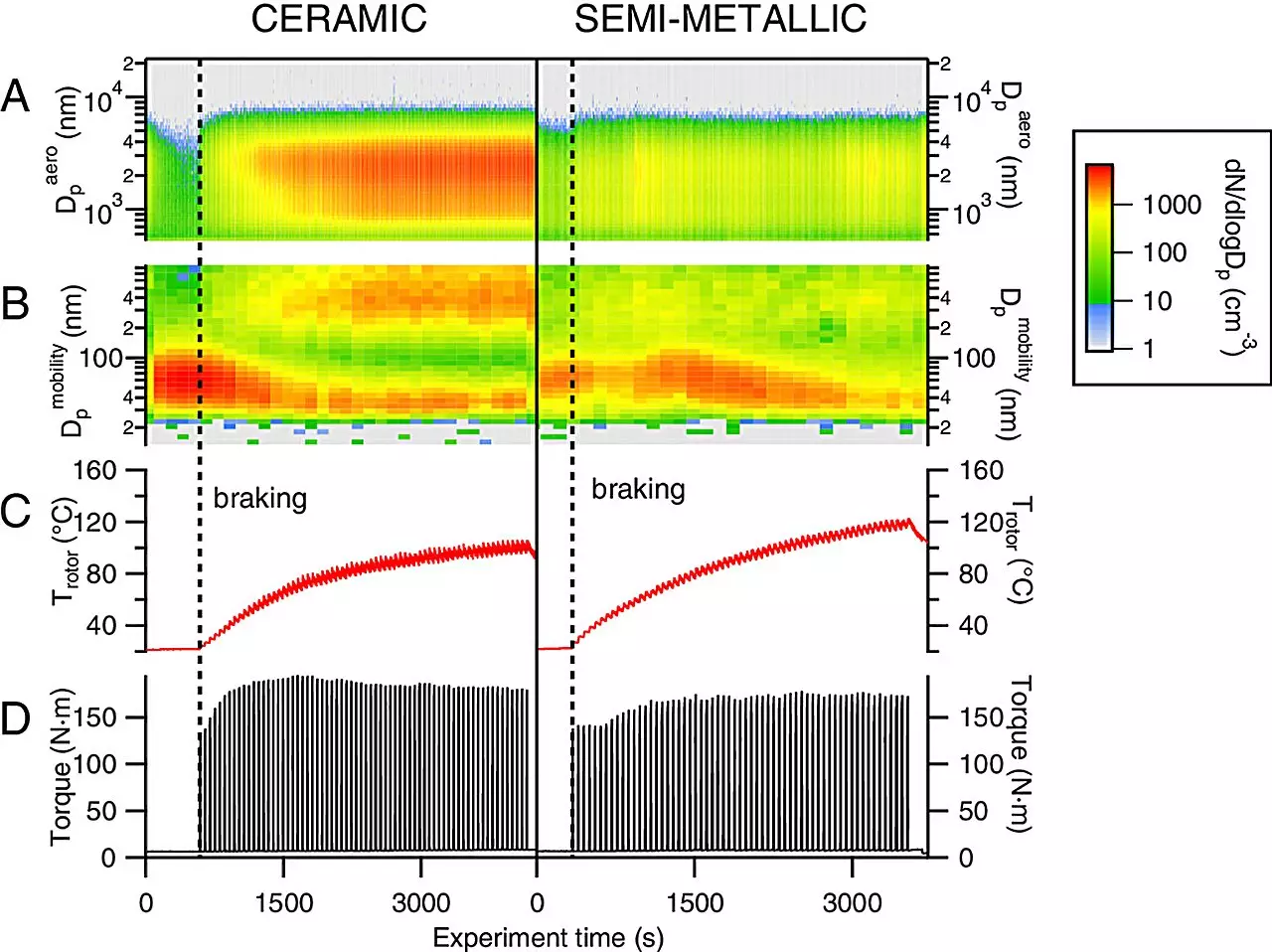While much attention has been given to tailpipe emissions from vehicles, researchers at the University of California, Irvine have shed light on the concerning issue of particles released into the air when a vehicle’s brakes are applied. This often-overlooked source of pollution may pose a greater threat to public health than previously thought, with up to 80% of particles emitted during braking found to carry an electric charge. In a groundbreaking study published in Proceedings of the National Academy of Sciences, UCI scientists reveal the potential implications of brake dust on air quality and how it may impact communities, particularly those in high-traffic areas.
The research conducted by the UCI team, led by Professor Jim Smith and doctoral candidate Adam Thomas, involved the use of a lathe to simulate braking conditions and measure the electric charge of aerosol particles emitted into the air. The results were astonishing, with a significant portion of the particles found to be highly charged. This discovery raises concerns about the health effects of brake wear particles, as their toxicity and potential to induce oxidative stress remain largely unknown. With the rise of electric vehicles, which are not truly emission-free, strategies to mitigate emissions from brake use are crucial in reducing overall air pollution levels.
Environmental Implications
The study’s findings underscore the need for municipalities to consider the impact of non-tailpipe emissions on air quality and public health. Electric cars, while heralded as a cleaner alternative to traditional vehicles, still contribute to pollution through brake dust. The percentage of charged particles emitted during braking is influenced by the composition of brake pads, suggesting that targeted interventions such as electrostatic precipitators could effectively remove these particles from the air. This innovative approach highlights the potential for technology to address the growing concern of brake dust pollution in urban areas.
An often-overlooked aspect of brake dust pollution is its unequal distribution among different populations. Lower-income communities, typically located in high-traffic areas, are disproportionately exposed to brake emissions, leading to environmental justice concerns. Professor Barbara Finlayson-Pitts emphasizes the need to address this disparity and raise awareness about the potential health risks associated with brake dust exposure. Collaborations with community organizations, such as the Madison Park Neighborhood Association in Santa Ana, play a crucial role in disseminating scientific findings and promoting environmental advocacy at the local level.
As the automotive industry continues to evolve, it is essential to consider the holistic impact of vehicle emissions on air quality and public health. The groundbreaking research conducted by the UCI team highlights the significance of brake dust as a source of pollution and calls for innovative solutions to mitigate its effects. By addressing the environmental and health implications of brake emissions, policymakers and researchers can work towards creating a cleaner and healthier environment for all members of society. Awareness, collaboration, and technology will be key in driving positive change and improving air quality in communities affected by brake dust pollution.



Leave a Reply